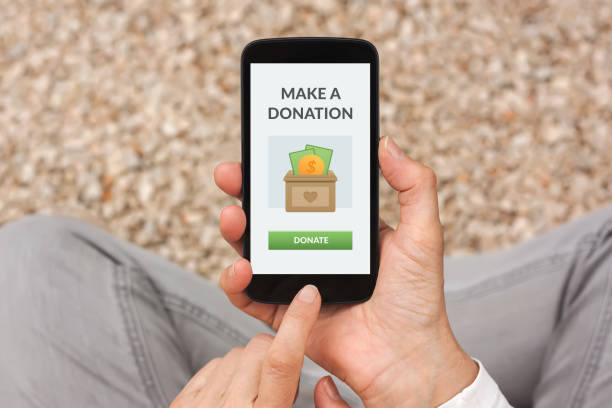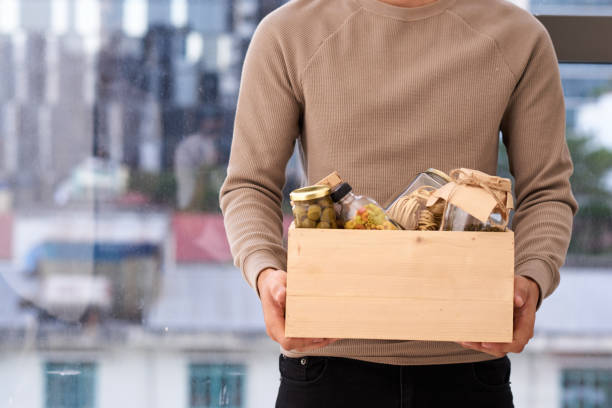Donation Acknowledgement Letter: A Comprehensive Guide
Understanding the Importance of Donation Acknowledgement
Donation acknowledgement letters play a crucial role in the donor relationship process. These letters serve not only as a formal receipt but also as a heartfelt thank-you note, demonstrating gratitude and appreciation for the donor's support. Recognizing the significance of these letters can help non-profit organizations maintain and enhance their donor relationships, ensuring continued support and fostering a sense of trust and loyalty.
Crafting the Perfect Acknowledgement Letter
A well-crafted donation acknowledgement letter should be personalized, sincere, and informative. It should reflect the organization's appreciation for the donor's contribution and provide an update on how the donation will be utilized. This transparency builds trust and shows donors that their contributions are making a real difference.
Key Elements of an Effective Acknowledgement Letter
To create an effective donation acknowledgement letter, several key elements must be included. These elements ensure the letter is comprehensive and fulfills its purpose of thanking and informing the donor.
Personalization
Personalizing the letter is essential to make the donor feel valued and appreciated. Address the donor by name and, if possible, mention specific details about their donation. This could include the amount donated, the date of the donation, and any particular fund or project the donation was directed towards.
Sincere Gratitude
Expressing sincere gratitude is the heart of an acknowledgement letter. Convey your heartfelt thanks and appreciation for the donor's generosity. Let them know how their support is making a difference and impacting the organization's mission.
Tax Information
Including tax information is crucial for the donor's records. Provide the necessary details, such as the organization's tax-exempt status and any other relevant tax information. This ensures the donor can claim their donation on their tax returns.
Impact Statement
An impact statement is a powerful way to show donors the tangible effects of their contributions. Describe how the donation will be used and the specific projects or initiatives it will support. Share stories or examples of the people or communities that will benefit from the donor's generosity.
Structuring the Acknowledgement Letter
The structure of the donation acknowledgement letter is just as important as its content. A well-organized letter ensures clarity and readability, making it easier for donors to understand and appreciate the message.
Opening Paragraph
The opening paragraph should immediately acknowledge the donor's contribution and express gratitude. It sets the tone for the rest of the letter and ensures the donor feels appreciated from the very beginning.
Middle Paragraphs
The middle paragraphs provide detailed information about the donation and its impact. Include specific details about the donation amount, the date it was received, and any designated projects or funds. Follow this with an impact statement, highlighting the difference the donation will make.
Closing Paragraph
The closing paragraph should reiterate gratitude and express hopes for continued support. Offer to provide further information or assistance if needed and remind the donor of the importance of their ongoing support.
Examples of Impactful Acknowledgement Letters
While each donation acknowledgement letter should be unique and tailored to the specific donor and organization, here are a few examples to illustrate effective letters:
Example 1: General Donation
Dear [Donor's Name],
On behalf of [Organization's Name], I want to extend our heartfelt gratitude for your generous donation of [Donation Amount] on [Donation Date]. Your support is crucial to our mission of [Organization's Mission].
Thanks to your contribution, we can [Describe the specific project or initiative]. Your generosity is making a significant impact on the lives of those we serve.
Once again, thank you for your support. We look forward to continuing our partnership in making a difference.
Sincerely,
[Your Name]
[Your Title]
Example 2: Specific Fund or Project
Dear [Donor's Name],
We are deeply grateful for your generous donation of [Donation Amount] to the [Specific Fund or Project] on [Donation Date]. Your support is instrumental in helping us achieve our goals.
With your contribution, we can [Describe how the donation will be used]. Your commitment to [Organization's Mission] is truly making a difference.
Thank you once again for your kindness and support. We are honored to have you as a partner in our mission.
Warm regards,
[Your Name]
[Your Title]
Ensuring Timeliness
Timeliness is a critical factor in the effectiveness of a donation acknowledgement letter. Sending the letter promptly after receiving the donation demonstrates professionalism and appreciation. It reassures the donor that their contribution is valued and has been received.
Using Technology for Efficient Acknowledgement
In today's digital age, leveraging technology can enhance the efficiency and personalization of donation acknowledgement letters. Consider using donor management software to automate and streamline the acknowledgement process. This software can help generate personalized letters, track donations, and ensure timely delivery.
Email Acknowledgement
Email is a quick and cost-effective way to acknowledge donations. However, it should still be personalized and heartfelt. Ensure the email contains all the key elements of an effective acknowledgement letter and is sent promptly.
Printed Acknowledgement
While email is convenient, printed letters can have a more personal touch. Consider sending printed acknowledgement letters for significant donations or to long-term supporters. A handwritten note or signature can add an extra layer of personalization.
Maintaining Donor Relationships
Donation acknowledgement letters are just one aspect of maintaining strong donor relationships. Regular communication, updates on projects, and invitations to events can further engage donors and show them the ongoing impact of their support.
Regular Updates
Providing regular updates on how donations are being used and the progress of specific projects keeps donors informed and engaged. Newsletters, social media updates, and annual reports are effective ways to share this information.
Donor Recognition
Recognizing donors publicly can also strengthen relationships. This could include mentioning donors in newsletters, on the organization's website, or at events. Ensure donors are comfortable with public recognition before proceeding.
Invitations to Events
Inviting donors to events allows them to see firsthand the impact of their contributions. It also provides an opportunity for personal interaction and relationship building. Consider hosting events such as open houses, project tours, or appreciation dinners.
Legal and Ethical Considerations
When writing donation acknowledgement letters, it is essential to consider legal and ethical obligations. Ensure the letter includes accurate information and complies with relevant tax regulations. Transparency and honesty are paramount in maintaining donor trust.
Accurate Information
Provide accurate information about the donation, including the amount, date, and any specific funds or projects. Double-check for errors to avoid any misunderstandings or confusion.
Compliance with Tax Regulations
Ensure the letter includes all necessary tax information, such as the organization's tax-exempt status and any relevant tax codes. This helps donors claim their donations on their tax returns and ensures compliance with legal requirements.
Transparency and Honesty
Be transparent and honest about how donations will be used. Avoid making exaggerated claims or promises that cannot be fulfilled. Transparency builds trust and fosters long-term donor relationships.
Conclusion
Donation acknowledgement letters are a vital component of donor relationship management. They serve to thank and inform donors, reinforcing their commitment to the organization's mission. By crafting personalized, sincere, and informative letters, non-profit organizations can enhance donor satisfaction and foster continued support. Timeliness, technology, and regular communication further strengthen these relationships, ensuring donors feel valued and appreciated. Legal and ethical considerations must also be kept in mind to maintain trust and transparency. Ultimately, a well-written donation acknowledgement letter can make a significant impact on donor retention and the overall success of an organization's fundraising efforts.




